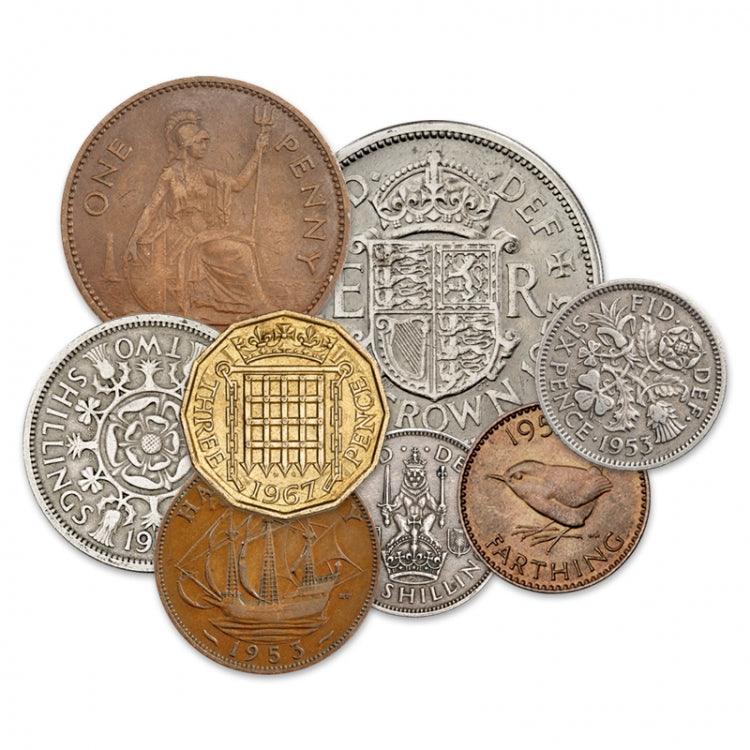A Beginner’s Guide to Pre-Decimal Currency in the United Kingdom
Introduction
Before the decimalization of the UK currency in 1971, the British monetary system was based on pounds, shillings, and pence. This system had a rich history, with each coin reflecting the culture, economy, and society of its time. In this comprehensive guide, we’ll explore the fascinating world of pre-decimal currency, from the farthing to the shilling.
1. The Farthing
-
Value: A quarter of a penny.
-
Years in Circulation: 1860-1956.
-
Significance: The farthing featured portraits of various monarchs, including George I, Queen Victoria, and Queen Elizabeth II.
2. The Half Penny
-
Value: Literally half of a penny.
-
Years in Circulation: Last issued for circulation in 1967.
-
Fun Fact: Two farthings made a half penny.
3. The Penny (1d)
-
Value: Less than the modern ‘New’ Penny.
-
Years in Circulation: Used from 1714 until 1967.
-
Trivia: There were 240 pennies in a pre-decimal pound.
4. The Threepence (3d)
-
Shape: Britain’s first non-circular coin since the 17th century.
-
Materials: Brass “Thrup’nny Bit” and silver versions.
-
Value: Equal to exactly three pennies.
5. The Sixpence (6d)
-
Nickname: Also called a ‘Tanner.’
-
Value: Equivalent to one-fortieth of a pound sterling.
-
Tradition: Considered lucky; hidden in Christmas puddings for prosperity.
6. The Shilling (1/-)
-
Value: 12 pennies (20 shillings in a pound).
-
Transition: Replaced by the five new pence in 1968.
-
Legacy: Used as five pence pieces until 1990.
Conclusion
The pre-decimal coins tell a captivating story of British history, culture, and everyday life. From the tiny farthing to the sturdy shilling, each coin represents a piece of our past. Next time you come across an old coin, remember the fascinating journey it has taken through the ages.
Remember, these coins were once part of everyday transactions, and their legacy lives on in the memories of those who used them

